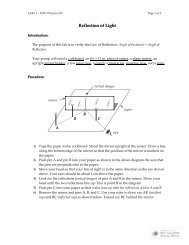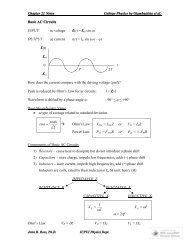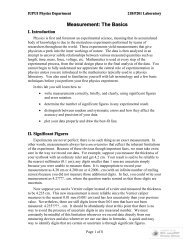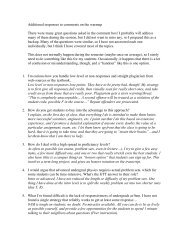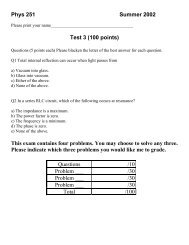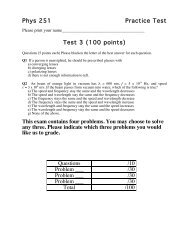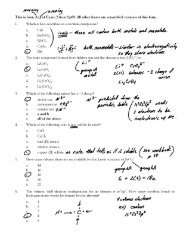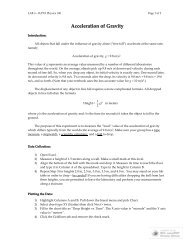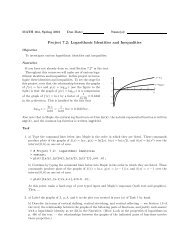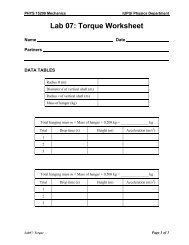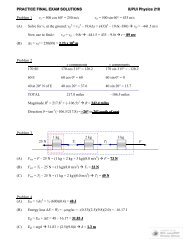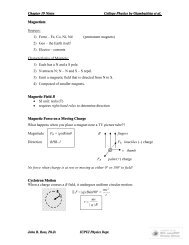DC Circuits Lab - Web Physics
DC Circuits Lab - Web Physics
DC Circuits Lab - Web Physics
Create successful ePaper yourself
Turn your PDF publications into a flip-book with our unique Google optimized e-Paper software.
Section 2<br />
Continue to work with the first circuit, focusing on the three empty cells available for voltage<br />
calculations (D7,B7, and B9). Create a formula for each of these cells that calculates the voltage<br />
relative to ground at points a, b, and c. These formulas should all depend on the source voltage,<br />
the individual resistance values, and the value of the current.<br />
‣ Again, test your formulas by changing the given values.<br />
‣ Before moving ahead please answer the questions on the back page referring to Section 2.<br />
Section 3<br />
The second area has a circuit that is somewhat more complicated than the previous one. A<br />
branch has been added as well as two additional batteries. There are now three currents present<br />
that you will need to create formulas for (cells H3, I3, and J3). These are the formulas that<br />
you calculated before class and should be in terms of the three source voltages and the three<br />
resistance values.<br />
‣ Once again, test your formulas by varying the values for the source voltages and resistances.<br />
Do your formulas hold up?<br />
‣ Create a few more cells<br />
that calculate other<br />
testable values.<br />
‣ Calculate the voltage<br />
difference between the<br />
bottom wire and the node<br />
at the top-center using<br />
three different paths.<br />
‣ Please answer the<br />
questions on the back<br />
page that refer to Section<br />
3.<br />
<strong>Physics</strong> 251 <strong>DC</strong> <strong>Circuits</strong> <strong>Lab</strong> 2 Fall 2002



